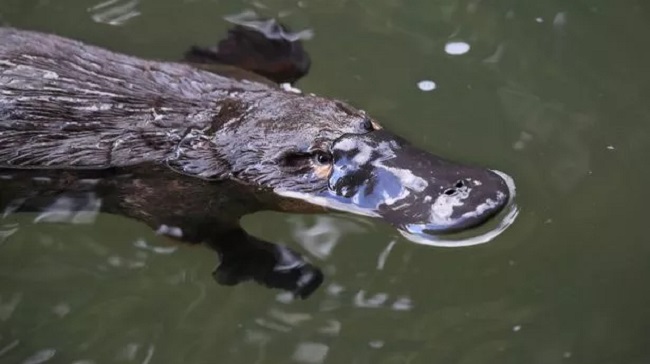The Platypus is a fascinating creature known for its odd combination of characteristics, including a duck-like bill, otter-like body, and beaver-like tail. It’s an egg-laying mammal (a monotreme) that hails from Australia and Tasmania.
However, the idea of a Pet Platypus is more myth than reality, due to their specific needs and protected status.
Nevertheless, we can dive into the hypothetical scenario of what it would mean to have a Platypus as a pet and discuss the care they would require.

Understanding the Platypus
Here are some characteristics of Pet Platypus:
Read Also:
Unique Characteristics
The Platypus is an extraordinary animal, with males boasting a venomous spur on their hind legs capable of delivering a severely painful sting. They’re semiaquatic, spending their time both in water and on land, and are most active during nighttime (nocturnal).
Behaviour and Diet
Platypuses are solitary animals and excellent swimmers. They feed on small aquatic creatures like insects, shellfish, and worms. Feeding a Platypus in a domestic environment would be challenging, given their specific diet and hunting habits.
The Reality of a Pet Platypus
This is the reality of having a Pet Platypus:
Conservation Status and Legal Restrictions
The Platypus is a protected species in Australia, making it illegal to keep one as a pet. Removing a Platypus from the wild can also cause significant stress to the animal and disrupt local ecosystems.
Platypus Care and Habitat
The care and habitat requirements for a Platypus are extensive. They need plenty of water – an environment similar to a stream or small river, complete with a burrow-like structure for rest. This makes it nearly impossible for a home environment to meet their needs.
Health Considerations
Platypuses require a diet of live food, making their nutritional needs challenging to meet in captivity. They are also susceptible to various diseases and injuries, which require expert veterinary care.
There Are No Breeds of Platypus
Unlike dogs or cats, there are no different “breeds” of Platypus. There’s only one species, known as Ornithorhynchus anatinus. Some size and color variations exist between Platypuses from different geographic areas, but these are not separate breeds.
Further Insights into the Platypus
Understanding the Platypus’s nature, behavior, and ecological role provides further reasons for why they should remain in their natural habitats rather than attempting to domesticate them.
Platypus Reproduction
Platypuses have a unique mode of reproduction – they are one of the few mammalian species that lay eggs. Female Platypuses dig deep burrows where they lay one or two eggs, which they incubate by curling their body around them. This specific reproductive behavior highlights another challenge in attempting to keep Platypuses in a domestic setting.
Ecological Role of the Platypus
As an apex predator in their environment, Platypuses play a crucial role in maintaining the balance of their ecosystem.
By feeding on aquatic invertebrates, they help control their populations, affecting the overall health of aquatic environments. Removing them from their habitats can disrupt this balance and negatively affect biodiversity.
Platypus and Human Interaction
While Platypuses generally pose no threat to humans, male Platypuses carry venomous spurs on their hind legs, which can cause severe pain to humans if used in self-defense. This feature adds another layer of complexity to the notion of keeping a Platypus as a pet.
Conservation Efforts for the Platypus
The Platypus population is under pressure due to habitat loss, pollution, and the impact of climate change. Numerous organizations are working to conserve and protect Platypus populations.
These efforts include habitat restoration, monitoring programs, and public education about the importance of these unique creatures.
Read Also:
Conclusion
While the idea of having a Pet Platypus may seem exciting due to their unique and fascinating nature, the reality is not feasible or ethical. The Platypus is a wild, protected animal with specific needs that are nearly impossible to meet in a domestic setting.
Rather than aspiring to own a Platypus as a pet, we should focus on appreciating them in their natural habitats and supporting conservation efforts to ensure their survival.
























